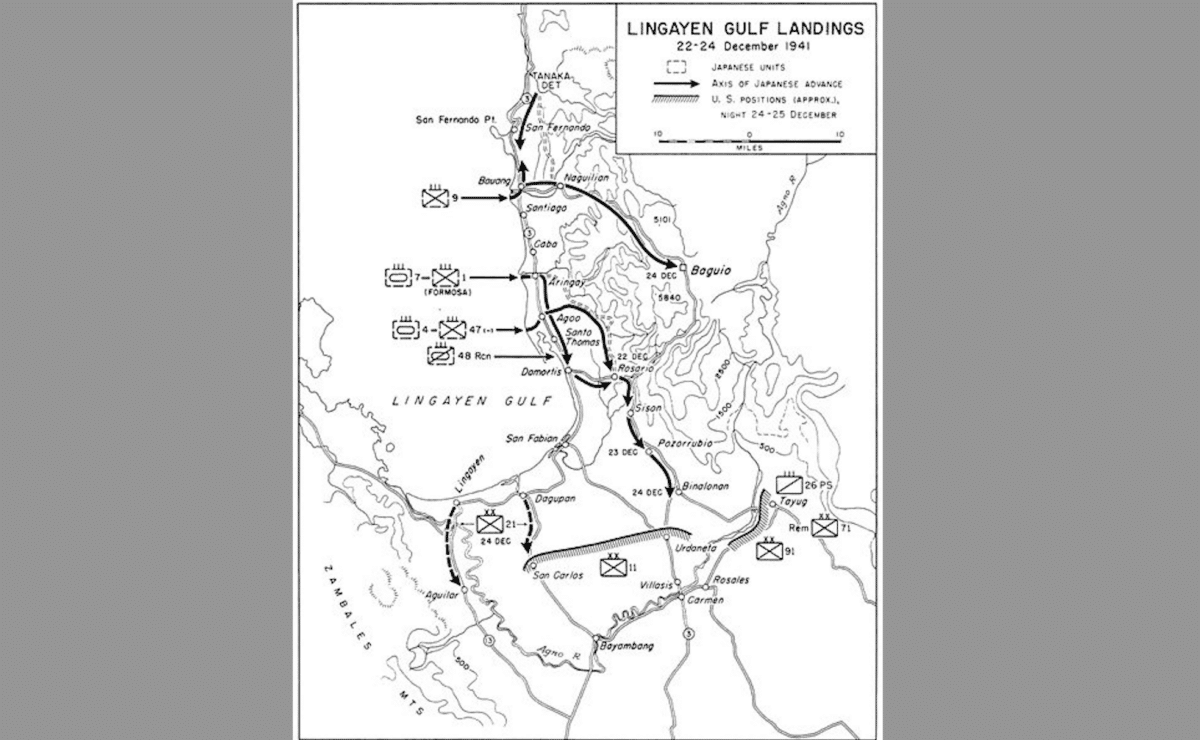December 22, 1941: Japanese Imperial Army invades Lingayen Gulf

Photo from Wikipedia
On December 22, 1941, the 14th Japanese Imperial Army, under the command of Lieutenant General Masaharu Homma, landed at Lingayen Gulf in Northern Luzon.
The 14th Army, with approximately 43,000 soldiers, was a mixture of battle-hardened veterans and rookie soldiers. The Japanese Imperial Navy convoy to Lingayen Gulf totaled more than 60 vessels that originated in Taiwan.
At the time of the Japanese invasion of the Philippines on December 22, 1941, it had only been 14 days since the Japanese air forces attacked Clark Field, Nichols Field and Iba Field.
During the aerial attacks, most of the modern American B-17 bombers and P-40 fighters were destroyed. It had only been 15 days since the Japanese assault on Pearl Harbor, Hawaii.
The Japanese landing at Lingayen Gulf did have some difficulties. The weather was rough, which resulted in damage to many landing craft. The original landing site was altered due to the weather. This unexpected change in landing areas proved to be beneficial to the Japanese.
The combined American and Filipino forces were entrenched at the likely invasion sites, not where the Japanese ultimately landed. This gave the Japanese a tactical advantage, which allowed the Japanese infantry to flank the American and Filipino positions.
You may like: Remembering Pearl Harbor – and the forgotten Filipino heroes of WWII
The Americans and Filipinos had too large a geographical area to counter the invasion. An abrupt change in American war planning for the Philippines prior to World War II proved to be indefensible. The Americans and Filipino forces could not defeat the Japanese at the endless beaches in the Philippines.
Two days after the landing at Lingayen Gulf, the Japanese Imperial Army landed at Lamon Bay south of Manila. The Japanese rapidly advanced through Luzon from both directions. The goal was to capture Manila and the retreating American and Filipino troops.
Since the Japanese incurred minimal resistance in Central Luzon and advanced quickly, the American leadership decided to revert to earlier war planning called War Plan Orange. The plan detailed the retreat of American and Filipino forces to the Bataan Peninsula.
Once deployed in Bataan, the troops would dig in and hold out for months until a naval rescue arrived from Pearl Harbor. The plan detailed the need to transfer massive amounts of food and supplies to Bataan, which did not occur.
The retreat to Bataan by American and Filipino forces from the north and south was implemented with great skill and precision. It was unexplainable why the Japanese air force, which had air superiority, did not decimate the retreating forces.
Dennis Edward Flake is the author of three books on Philippine-American history. He is a Public Historian and a former park ranger in interpretation for the National Park Service at the Eisenhower National Historic Site in Gettysburg, PA. He can be contacted at: flakedennis@gmail.com

